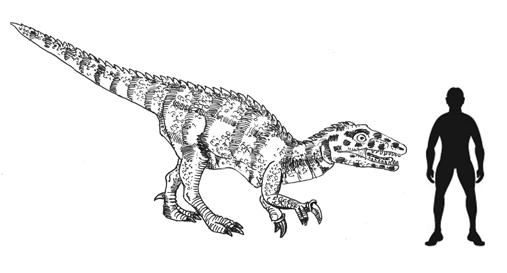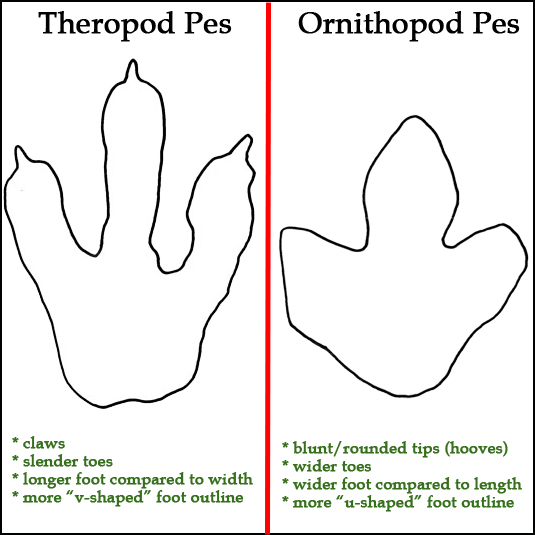Walking with Dinosaurs Down at the Beach
Surprise Discovery of Dinosaur Tracks At Tourist Hot Spot
Fossilised footprints of a large theropod dinosaur have been discovered at one of Australia’s most popular tourist beaches. Broome’s Cable Beach is a very popular tourist area and hundreds of people visit this beautiful part of the Western Australian coast every day. However, the pristine white sands hide a secret, it overlies a series of Cretaceous rock exposures where plant fossils and occasionally dinosaur footprints can be found.
Three-Toed Dinosaur Prints Typical of Dinosaurs
Picture credit: Everything Dinosaur
Ms Bindi Lee Porth was collecting shells at the beach last Sunday evening, when she literally stumbled across an amazing fossil find. She noticed a strange shape in the rock and as she puts it herself:
“I just sort of brushed all the sand away and it’s revealed this beautiful, like a bird, foot.”
The Broome Coastline and Dinosaur Tracks
This part of the coast of Western Australia is renowned for its dinosaur tracks, that date from the Early Cretaceous (130 million years ago), a time when Australia was part of a much larger land mass (Gondwana) and it was nearer the South Pole. Despite the high latitude, the climate was temperate to sub-tropical and many different kinds of dinosaurs roamed the land.
Last year, Everything Dinosaur reported on efforts by University of Queensland researchers to map the extensive trackways using drones.
To read an article about this: Mapping the Dinosaur Heritage of Western Australia.
The three-toed prints were exposed by the shifting sands, to have a set of tracks found so close to such a popular tourist location is quite a surprise and Ms Porth initially doubted what she had found, after all, casts of dinosaur footprints set in concrete have been created elsewhere along the coast in a bid to inform visitors about the ancient heritage of this part of Western Australia. However, after having the trace fossils examined by Queensland University palaeontologist, Steve Salisbury, it was confirmed that these prints were genuine.
Dr Salisbury commented:
“There have been tracks spotted in the Cable Beach area over the years, most of those are sauropod tracks, but this is the first time we’ve become aware of there being another type of dinosaur track in that area.”
More Than One Type of Three-toed Dinosaur
Dr Salisbury’s trained eyes spotted something else unusual about the tridactyl prints. Claws marks at the end of the toes can be clearly made out so these tracks were probably made by a meat-eater, but some of the tracks are subtly different, this suggests that more than one type of theropod dinosaur is represented. The Queensland University based scientist hopes to study the casts and in situ prints in order to determine more information about the dinosaurs that created them.
Using a simple hip to stride length formula, Dr Salisbury has calculated that some of the prints were made by a dinosaur that had a hip height of around two metres. A spokesperson from Everything Dinosaur commented that although it was not possible to give an accurate size estimate for a dinosaur based on these preliminary findings and more measurements would need to be taken, but as a rough approximation, you could be looking at a dinosaur around six metres in length. A dinosaur that size would be about as big as Australovenator, a fearsome meat-eating dinosaur that lived some thirty million years or so after these tracks were made.
A Scale Drawing of the Theropod Dinosaur Australovenator

Vicious Dinosaur from “Down Under”. A drawing of Australovenator. Picture credit: Everything Dinosaur.
The picture (above) shows an illustration of Australovenator from the CollectA model range.
To view this range of prehistoric animal models: CollectA Age of Dinosaurs Popular Models.
Amazing Fossils
It may not be the biggest meat-eating dinosaur tracks ever found, the prints don’t represent the biggest theropod known from Australia, but they do indicate that even in the most unlikely places, amazing fossils can be found.
To read an article that calls for more research to be done on the Western Australia dinosaur tracks: More Research Urgently Needed to Help Preserve and Protect Western Australia’s Trace Fossil Heritage.
A spokesperson from Everything Dinosaur commented:
“Let us hope that the footprints are not disturbed. Hopefully, the scientists will be able to produce latex casts of the prints. These casts should yield much more information about the dinosaurs of Australia.”
Visit Everything Dinosaur’s award-winning website: Visit Everything Dinosaur.


